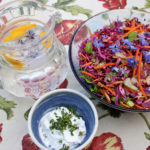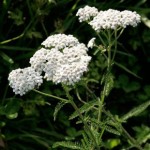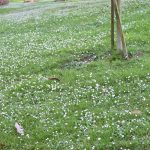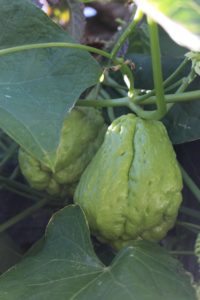
Choko fruit on the vine
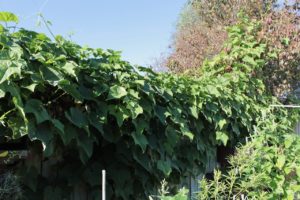
Rampant growing vine.
Choko Sechium edule. Is this highly underrated prolific producer of fruit on rampant vines a weed, a fruit or a vegetable? Choko vines grow rapidly, scrambling and covering their support. I watched with curiosity as long searching tendrils appeared over the fence from the neighbour. Now the top of the fence is completely covered, the grape vine has disappeared and they’re on up the tree. Choko also known as Chayote or Mirliton (in the UK) belong in the gourd family Cucurbitaceae along with pumpkins and squash. Other names are vegetable pear or mango squash. The name choko we use in New Zealand originated with the Cantonese market gardeners who introduced them here in the 19th Century. Their country of origin is Central America and now they’re found all over the world.
Chokos are a late summer, autumn producing crop requiring humus
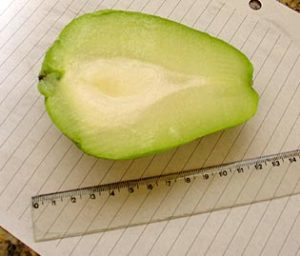
Inside a choko
rich soil. They can tolerate temperatures between 13 and 21degrees but are killed by frost. They’re easy to grow from new plants each year. Save a mature fruit, let it sprout, nurture it over winter and it will produce prolifically the following season.
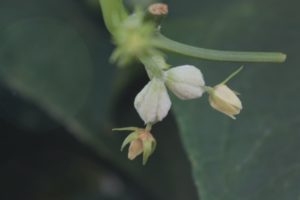
Female flowers with the tiny fruit behind.
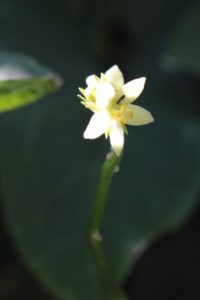
Male flower cluster
The plant bears clusters of male flowers and single female flowers. The resulting fruit is light green with deep ridges and the skin is dimpled with prickles all over. The flesh is hard but once cooked is soft and bland in taste, but this is where it is underrated. It takes up flavours and is excellent in so many dishes. We are enjoying it unpeeled, cut like kumara chips and baked with garlic, salt and pepper sprinkled on top. Peeled it is nice boiled, stuffed, mashed, pickled, or in curries, stir fries, soup and can be used to bulk up stewed fruit without losing its texture. It can also be used as a base for relish. Or grate it in salad or put on pizza, the ideas are endless. Not only the fruit but the seed inside the fruit is edible with a nutty flavour and can be cut up and baked or fried. The tendrils are tasty in
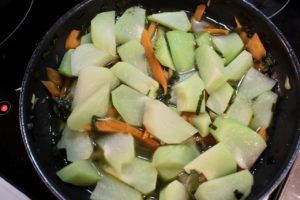
Stir fried choko and carrot
stir fry as are young heart shaped leaves and the tubers being starchy are eaten like potatoes or other root vegetables. Both fruit and seed are rich in amino acids, vitamin C, folate, pantothenic acid and vitamin E.
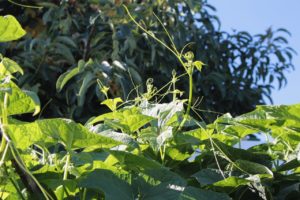
Choko tendrils and young leaves are good in stir fries.
Choko also has medicinal qualities and the leaves and fruit have diuretic, cardiovascular and anti-inflammatory properties. A tea made from the leaves has been used in the treatment of arteriosclerosis and hypertension, and to dissolve kidney stones.
How to store choko? We want to bottle some as an experiment, but at present we’re using them fresh and giving them away educating folk as to how versatile they are. Apparently they can be stored between 7-10°C with a relative humidity of 90-98%. Lower temperatures damage the fruit.
I hope this will encourage you to give them a go and while they grow like a ‘weed’ I think they’re a very valuable vegetable!
